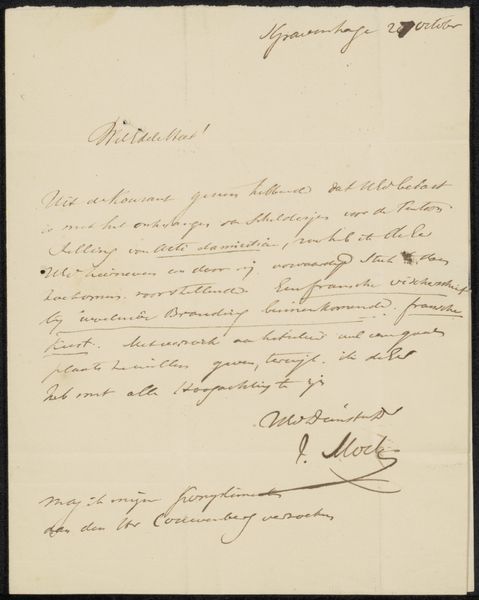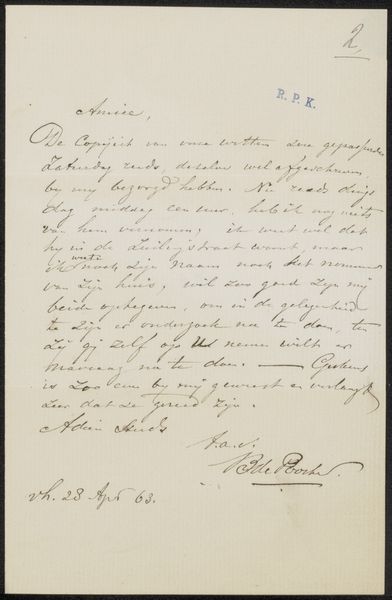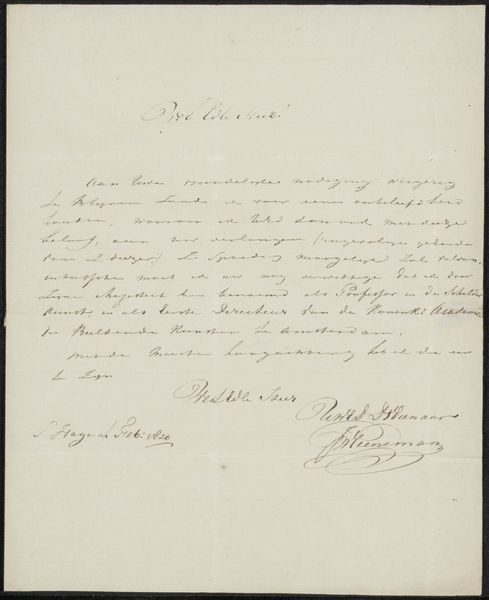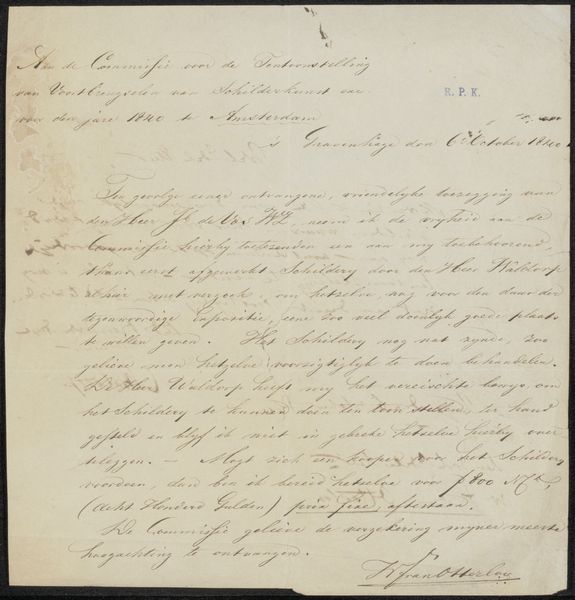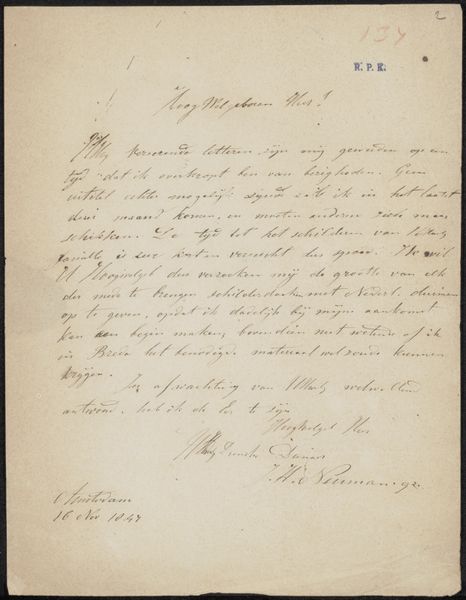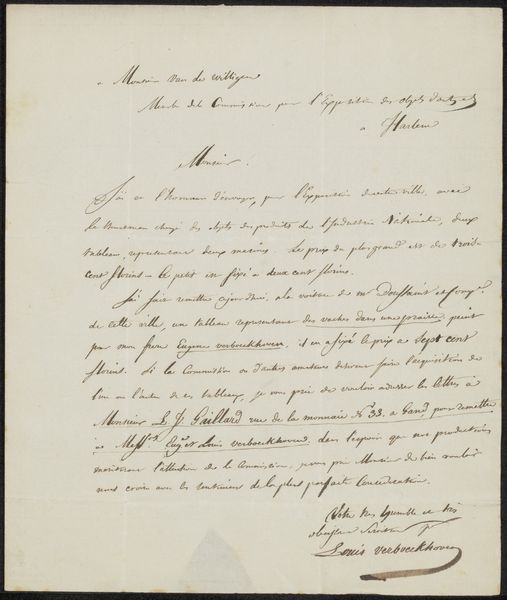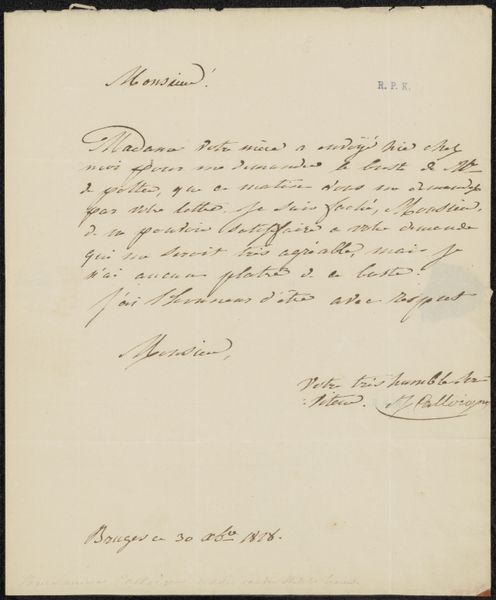
drawing, paper, ink, pen
#
drawing
#
ink paper printed
#
old engraving style
#
hand drawn type
#
paper
#
personal sketchbook
#
ink
#
hand-drawn typeface
#
ink drawing experimentation
#
pen-ink sketch
#
ink colored
#
pen work
#
sketchbook drawing
#
pen
Copyright: Rijks Museum: Open Domain
This is a letter, penned in 1855 by Hendrikus van de Sande Bakhuyzen. The writing itself, neat and precise, reminds us of the human impulse to order and communicate. Yet, the torn top of the page is a powerful symbol of time’s destructive force, suggesting loss and fragmentation. The act of writing has a long history, from ancient scrolls to digital screens. Letters, in particular, were once vital for maintaining connections over distance, carrying emotions and thoughts across physical space, much like the ancient ‘winged words’ described by Homer, carrying messages and maintaining human links. Notice the contrast: the carefully formed words versus the violent tear. This juxtaposition reveals a deep tension between our desire for permanence and the inevitable decay that time inflicts on all things. It mirrors our own psychological battles with memory, where we struggle to preserve and make sense of fragments from the past. Consider how the letter’s message, now partially lost, evokes a sense of incompleteness. This resonates with the cyclical nature of history, where fragments of the past resurface, influencing the present in unpredictable ways.
Comments
No comments
Be the first to comment and join the conversation on the ultimate creative platform.
